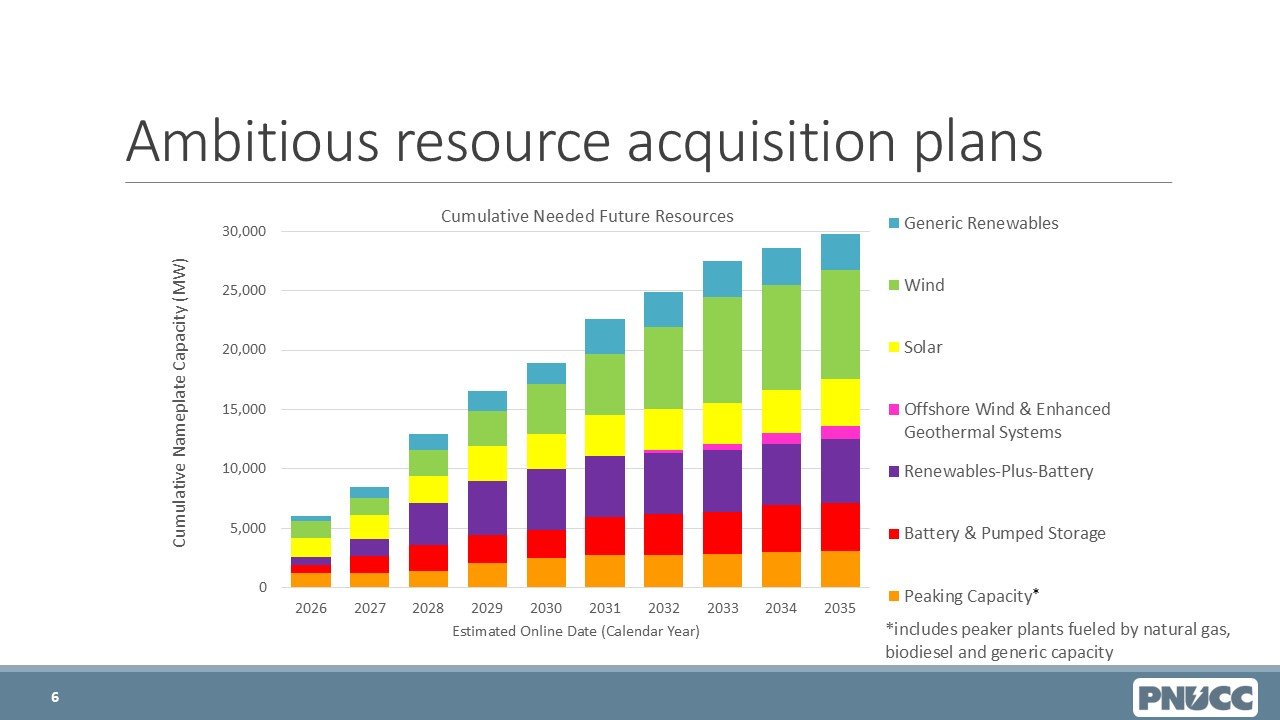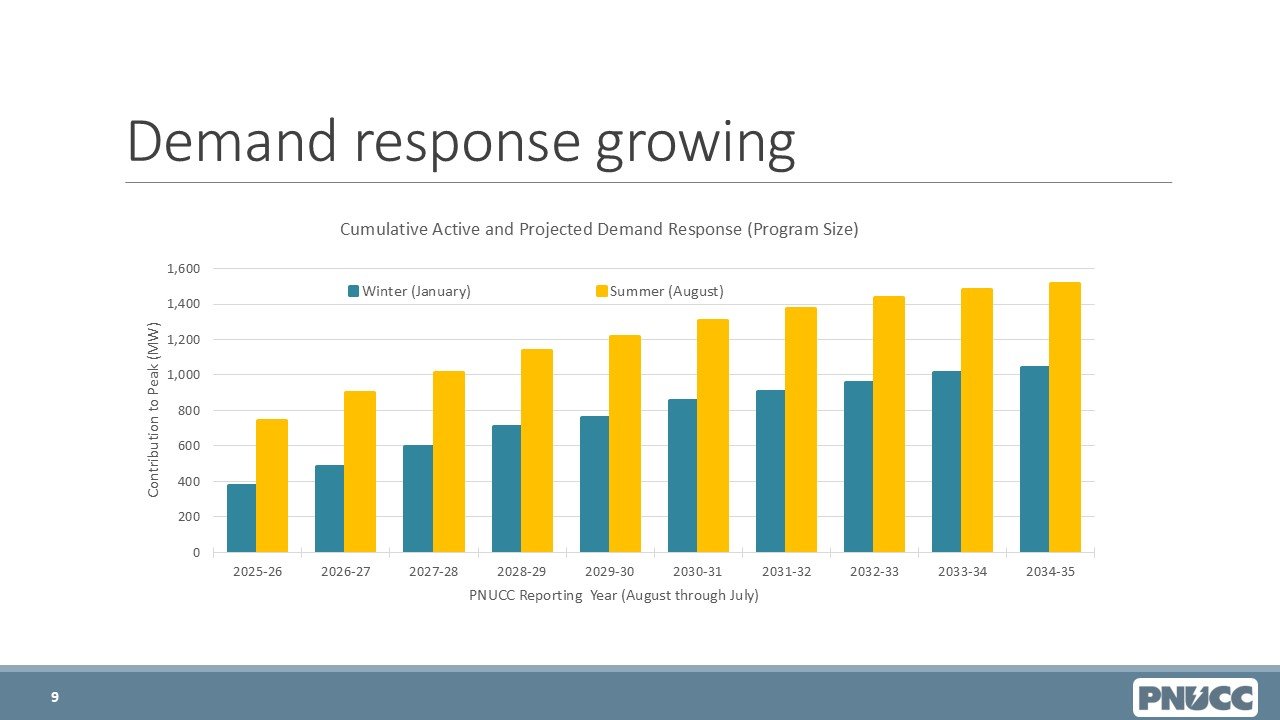PNUCC staff present results of annual Northwest Regional Forecast, discuss trends and challenges in regional power system
PNUCC staff highlights growing interest in, adoption of demand response to manage summer & winter grid peaks
- July 24, 2025
- Peter Jensen

At July’s Council meeting in Portland, staff from the Pacific Northwest Utilities Conference Committee discussed a new 10-year outlook they’ve produced showing regional utilities’ forecasted electricity demand and planned resources.
Further, they discussed recent trends, opportunities, including key issues they’re working on, and emphasized the importance of regional collaboration to address the twin challenges of significant future load growth and a shifting resource mix in the Northwest. (Read presentation | watch video)
Executive Director Crystal Ball started the presentation by noting that the information included in PNUCC’s annual Northwest Regional Forecast (NRF) is provided by utilities and the Bonneville Power Administration. The annual outlook provides a way of tracking trends using consistent assumptions for annual energy, winter and summer peak, but is not an evaluation of resource adequacy.
The forecast projects that regional loads could increase by about 7,800 aMW to 31,600 aMW by 2035, more than a 30% increase, which is in line with the 2024 NRF. Summer peak demand is projected to grow by 9,400 megawatts (MW), and winter peak demand by about 9,100 MW by 2035.
At the same time, regional utilities have approximately 30,000 MW of resources planned in the pipeline by 2035.
“Along with the surge in expected demand, we also have these ambitious resource acquisition plans,” said Gillian Charles, a consultant working with PNUCC. “However, regional utilities are facing growing pressure. The success of these plans really depends on many factors, including coordinated regional action. The data adds up to an unprecedented number of 30,000 megawatts of nameplate capacity in the next 10 years, an extraordinary number of added resources to develop within that timeframe.”

Charles noted several challenges to getting these projects onto the grid and delivering power: project development timelines are getting longer, and local opposition can delay or defeat proposed projects in permitting, siting, and approval processes. Transmission interconnection queues are congested, she said.
PNUCC Analytics and Policy Director Aliza Seelig highlighted the utilities’ efforts to pursue demand response, seeing it as an important resource for addressing the peak needs in the future.
“Winter demand response programs are becoming more prominent in this picture,” Seelig said. “This is an important and growing resource for utilities, along with the investments that they’ve made in energy efficiency to help keep the grid reliable. It is an important resource for the future.”

Ball cited several key takeaways that utilities have identified to help navigate through this uncertainty successfully:
- Regional utilities are feeling uncertainty and mounting pressure to add generating resources.
- Resource additions are at risk of not being deployed, thus threats to reliability are increasing.
- Natural gas and electric systems are increasingly interdependent, so they need to be carefully coordinated to mitigate reliability risks.
- Regional collaboration is essential for serving the needs of customers and Northwest communities.



